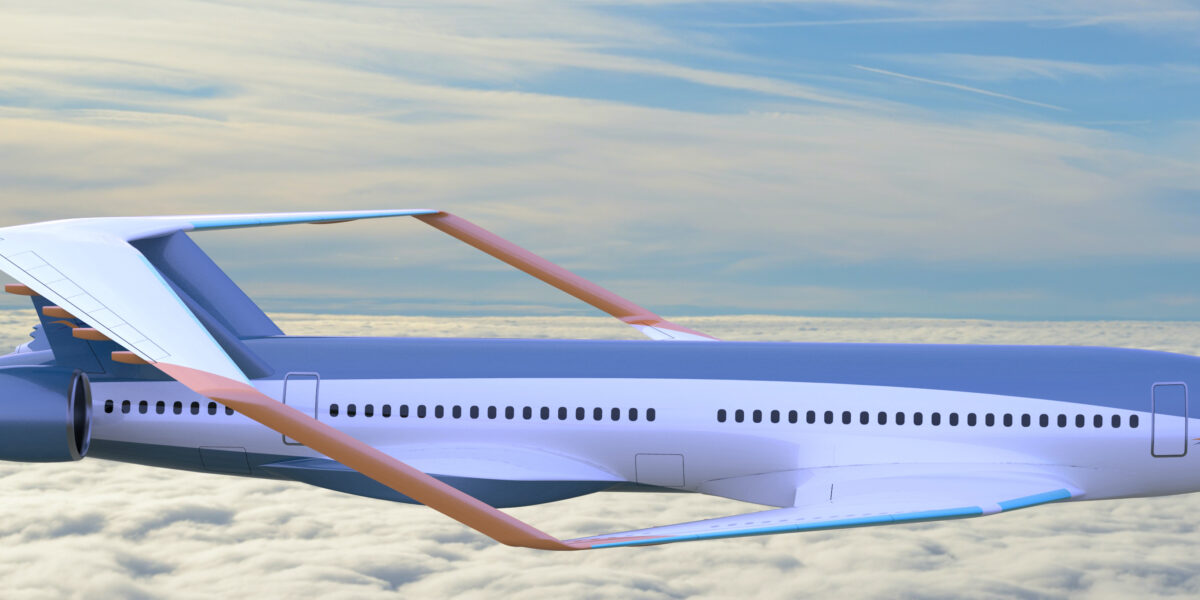The PARSIFAL Project (Prandtlplane ARchitecture for the Sustainable Improvement of Future AirpLanes), funded under HORIZON 2020, aims to evaluate the impact on the aviation world of a new concept aircraft called PrandtlPlane, which is a box-wing type aircraft that ensures a significant increase in the number of passengers and payload capacity compared to a conventional aircraft of the same size.

This configuration differs from traditional aircraft due to its wing structure, which supports the fuselage both in the front and rear parts, creating a “closed” wing surface by eliminating the wingtips, which are the primary source of resistance in level subsonic flight.
Furthermore, PARSIFAL serves as a platform for the development of new methodologies to evaluate the performance of this new class of aircraft not only in the reference configuration, comparable in size to an Airbus A320 or Boeing 737, but also for very different aircraft classes, such as large airliners with a high number of passengers, similar to an A330/B767.
PARSIFAL is implemented through the synergy of 6 partners led by DICI at the University of Pisa (Italy), including: Delft University of Technology (Netherlands), ONERA (France), DLR (Germany), ENSAM (France), and SkyBox Engineering S.r.l. (Italy).

Within this ambitious project, Cubit contributed to the preliminary aerodynamic design phase in transonic regime, supporting the University of Pisa working group in defining the Top Level Aircraft Requirements for an accurate evaluation of cruise speed and overall performance.
Once a reference configuration was defined, various numerical simulations were conducted using the commercial software Star CCM+ at different speeds, defining the performance and potential criticalities in the typical operating range of this type of aircraft, defined as M=[0.75,0.85] (Mach numbers).
The realization of CFD numerical simulations involved the use of two turbulence models, k-ε Realizable and SST k-ω, using the RANS modeling to assess their impact on numerical results, and the activation of the compressibility model given the considered speeds, which required a sufficiently refined and high-quality volume mesh to obtain reliable results.

The highlighted criticalities led to useful modifications to achieve an improved configuration as a basis for future numerical optimization of the aircraft. Interventions were made in the area around the vertical section connecting the front wing to the rear wing, the wing-fuselage intersection, an area typically problematic, especially in transonic conditions, and defining an optimal wing loading for the imposed operating conditions.

The possibility of conducting a comprehensive high-level numerical analysis in the preliminary phase of the project allowed for quick and targeted interventions on the most critical areas of the configuration, significantly accelerating the development and optimization times of the final configuration. Thanks to the high computing power at our disposal, we received timely feedback, ensuring continuity to the aircraft design process.
We thank Aldo Frediani, Karim Abu Salem, Vittorio Cipolla (UniPi), Marco Carini, Michaël Méheut, Stylianos Kanellopoulos (ONERA), Vincenzo Binante, Rizzo Emanuele (SkyBox Engineering), who are co-authors of two interesting scientific articles on the subject, along with Marco Maganzi, Head of CFD Application Engineering at Cubit, for actively involving us in such an innovative and exciting project.
For more information:
https://parsifalproject.eu/


